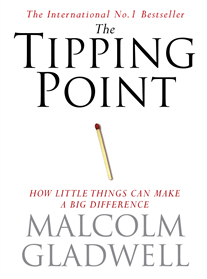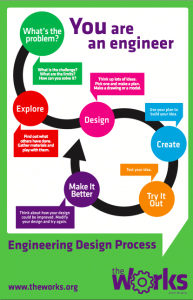7 Steps to Becoming a Change Agent

NOUN A change agent is a person from inside or outside the organization who helps an organization transform itself by focusing on such matters as organizational effectiveness, improvement, and development.
Whenever anyone wants to find information, especially to “What is” questions, they Google it. When you Google “change agent” or “what is a change agent”, you get a ridiculous amount of entries. There are a lot of good definitions out there regarding agents of change. For example, the above definition comes from instructor Shawn Grimsley at www.study.com. His instructional video outlines four items every change agent must possess:
- Broad Knowledge
- Operational and Relational Knowledge
- Sensitivity and Maturity
- Authenticity
These are good characteristics and make sense to me.
George Couros, one of my favorite bloggers, authors, and speakers on the subject, and Division principal for Parkland School District, and an innovative teaching, learning and leadership consultant, shortens the definition and then goes on to describe what he has observed in his consultant work.
(change agents)–People who act as catalysts for change…

In referencing Malcolm Gladwell’s famous book, The Tipping Point, Couros does an excellent job of discussing his 5 characteristics of a change agent:
- Clear vision
- Patient yet persistent
- Asks tough questions
- Knowledgeable and leads by example
- Strong relationships built on trust
I could continue paraphrasing others’ definitions and opinions of change agents. Suffice it to say, there are a lot of perspectives on the topic. So, although I agree with many of the points of both Couros and Grimsley, I offer my perspective on the subject, as well as 7 easy steps to becoming an agent of change.
My definition of change agent: someone who makes change. That’s it. We all experience change in every facet of our lives every day. We are all changing. Whether it is the obvious fact that each day we are one day older, or that we have learned something from yesterday’s experience, or whether we changed our outfit, change is a part of us; part of human civilization. If humans could not, or did not change, we would have become extinct hundreds of thousands of years ago. So, if we are all experiencing change, does that make us all change agents?
My short answer is no. Someone who makes change indicates that there is an action present. The verb, to make, indicates that a change agent must be someone who initiates, causes, forms, or produces change in some way, shape, or form. Therefore, my definition of a change agent requires that the person must not be a passive recipient of change, but an active participant. Could you argue that me changing my outfit from one day to the next is an action, therefore, and active change event. Sure. However, I want to discuss the nuanced elements of making change that I feel are required for a true change agent to create, and sustain change movements in whatever field he/she may be in.
Step 1: Know what a change agent is.
Good! Now that we have discussed the various definitions of change agents, you can check off this step. If, after reading this, you agree with my synthesized definition, you can move on to Step #2. However, my definition, as well as the other above ideas, are not canon. Ideas are meant to be discussed, processed, tweaked, idealized, redesigned, and discussed again. If, by reading this, you disagree or have your own definition or have tweaked, combined, and personalized your idea of change agent, GREAT! Whichever idea of change agent is most meaningful to you, is the one I want you to use because it will be the most sustainable once you begin to hit roadblocks (see Step #6).
Step 2: Reflect on change in your life.
This may not seem important, but take a moment to think deeply about changes you have experienced your life. Change careers? Partners? Living situations? In each case, ask did you initiate the change, or was the change thrust onto you? As Malvolio says in Shakespeare’s Twelfth Night: “Be not afraid of greatness: some are born great, some achieve greatness and some have greatness thrust upon them” (Act II, Scene V). We can view change in the same way. Did you move because you had to relocate for a job? Did you change careers because you needed more income? Or, were any of the changes in your life inevitable? For example, unless something prevents him, my son has to change grade levels at the end of each school year, whether he likes it or not.
How did you react to some of the big change events in your life? Were you anxious? Stressed out? Eager and excited for the change? Knowing how you react and respond to change, will give you a keen insight into how you would fair as a change agent. If changes stresses you to the point of paralysis, then perhaps becoming an agent of change isn’t a good idea. Consider something else. However, if you handle change reasonably well, or if you are excited at the thought of either experiencing change or initiating change, then continue to Step 3.
Step 3: Pick a cause to change.
What do you want to change? Your small-business model? Your career? For me, my cause lies in education. I am dedicated to making changes in public education. I have my specific causes, such as Science, Technology, Engineering, Mathematics (STEM) curricula in schools, equitable access to a quality educational experience, and ending systemic racism in public schools. For me, these are just a few of the ideas that I have swirling around in my head that keep me awake at night.
Make sure that the cause you choose is one you absolutely love and are willing to dedicate time towards. Change does not happen overnight. Depending on the cause, be prepared to dedicate years of your life to fulfilling this change. Once you have chosen a cause, stick to it. Since change comes slow, keep chipping away at what you are planning to change. In order to be effective and efficient, you need to understand the environment you are wanting to change.
Step 4: Understand and analyze the environment you want to change.
Now that you have chosen a cause to change, you will need to understand the environment with which you, and this cause, exists. Organizations are complex systems that are often difficult to change, unless you can find an area to leverage. Meadows (1999) defines leverage points as “places within a complex system where a small shift in one thing can produce big changes in
everything” (p. 1). These “points of power” are not always intuitive and are oftentimes used incorrectly inadvertently worsening the problem (p. 1). Leverage points are not meant to be “magic bullets”, but instead opportunities to analyze an organization’s paradigm with respect to the current systemic issue you would like to change. Spend some time interviewing or discussing your desired change with colleagues and other stakeholders within the organization. This can include, but is not limited to students, teachers, administration, and office staff). By analyzing the  organization you want to change, you will be better prepared in your action plan for making the change.
organization you want to change, you will be better prepared in your action plan for making the change.
Step 5: Make change.
It should be stressed here, that change comes slowly. Especially in large organizations, true systemic change often takes years of
leveraging, analyzing, regrouping, and reflection. If you do not see immediate change, that does not mean that you are not making change. With that said, reflecting on the change(s) you are making (Step #6) is closely related to making the change. In any engineering design process, reflection and redesign are integral to making something new. You should be assessing while you are making change. So, what does making change look like? That depends on what you have decided to change. If you changed your attitude, then you may notice that various aspects of your day feel different. Are you trying to be more optimistic? Well, you might start to feel a bit happier (or at least at ease) with parts of your day that used to cause you much stress or anxiety. If you are trying to change something systemic (e.g.: structural inequities, inequitable practices or policies, prejudices), then noticing a difference will be more challenging. Pay attention to the amount of pushback you receive as you begin to make this change. Are you receiving a lot of complaints? Angry responses? Resistance? Chances are, if you are receiving very little pushback, then your change is not working well. Now, there is a chance that you are changing something that everyone wanted to be changed, like adding an espresso bar to the staff workroom or teacher’s lounge. Most likely, though, if you are not receiving pushback then your act of change is not working. When you start to see, feel, or hear resistance, that is when you know you are on the right track to changing something deeply rooted in the system of your organization.
Keep going!
This is when you will really need to start rallying your allies and supporters and continuing to make change. Most people give up when resistance happens. To be a true change agent, you must continue in the direction of your cause. Remember, be patient and persistent as you ask tough questions and lead by example.
Step 6: Reflect on how change has been successful or not.
So, how are things going? Are you ready to give up? Are you having some success? Reflecting on your cause is extremely important. It is in these moments of analysis and reflection that you will see other opportunities to continue pushing forward. For example, who are your biggest supporters so far? How can you leverage these people as you continue pushing for change? If you don’t have many supporters, why? Is your message unclear? Are you trying to change something too large? In my personal example, I am passionate about removing the systemic barriers students of color experience when accessing STEM foundational thinking in their schools and classrooms. This requires a ton of reflection and redesign as I continue pushing for equal access and opportunities for students of color. All I can do is ask difficult questions and look and listen for potential leverage points.
If, after some time you are still finding that you are unsuccessful, this is important too! In looking back at your cause, it is important to understand how particular systems operate, even if you are not trying to make a systemic change. This is why it is so important to understand the organization you are trying to make change within or change itself. Perhaps it is time to take a look at your potential leverage points (or the leverage points you already attempted). Are you trying to make a paradigm shift? Although this is the most effective leverage point for change, it is also the most difficult. There is no guaranteed formula for how to make change happen. All you can do is continue recruiting allies for your cause, brainstorming potential leverage points to push, and remaining patient. Perhaps taking a step backward will allow you to understand that the timing may not be right. I promise that your time spent reflecting, either alone or with a group of colleagues, will not be time wasted! The reflection process is often one that is the most overlooked or skipped, but it is also the most important step on this list. By reflecting, you not only remain focused on your change goal, but you stay connected to the reasons you wanted to be a change agent in the first place. Setting time aside each week to reflect on your progress will help you better understand your behavior, the behavior of the system or organization around you, and your state of mind.
Step 7: Repeat as necessary
The real kicker in all of this is that if or when your change idea works, there is no guarantee that it will be sustainable. How many times have you successfully lost some weight or reduced your pants size, only to need to start over again a few months later? This is because oftentimes, especially with personal changes, we try too much too soon. We want immediate or grand changes to happen, like losing 40 pounds in a week. The key is to find small leverage points that you can push in order to create lasting change. Only eating watermelon for a week may help you lose a lot of weight quickly, but that isn’t how you want to live the rest of your life! The same can be said for making a systemic change in an organization. For example, I am looking to increase access and opportunities for students of color for STEM curricula and STEM-foundational thinking in their academic lives. At the same time, I want to eliminate the systemic racism or prejudice that disproportionately creates STEM inequity. What would happen if I were to go into a school building and announce that starting tomorrow, everyone must begin using STEM foundational thinking in their classrooms and that anyone who has lowered expectations for their students of color or who is either consciously or not preventing all their students from accessing this type of academic rigor would be fired? This would certainly get everyone’s attention! It may even change some behaviors quickly for fear or being fired. However, how sustainable is this approach? Forcing behavior changes is not going to last. Instead, I need to work with a school to understand their own system and why all of their students are not equally engaged or are not performing to the same high levels. This approach requires constant monitoring, reflection, and adjustment for it to be sustainable. A book study on systemic inequity or creating STEM opportunities isn’t going to create lasting change unless I am committed to be a long-term change agent. To be a change agent isn’t a short-term job. It is a lifestyle choice. It is a dedication to continually improving yourself and the organizations around you. In order to be someone who makes change, you must be willing to adapt and change while pushing for things you believe in. This is what it means to be a change agent.

 Next Post
Next Post